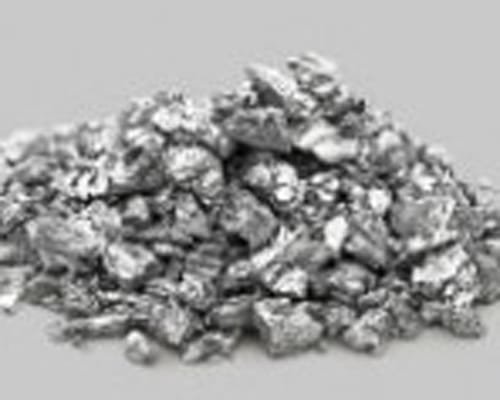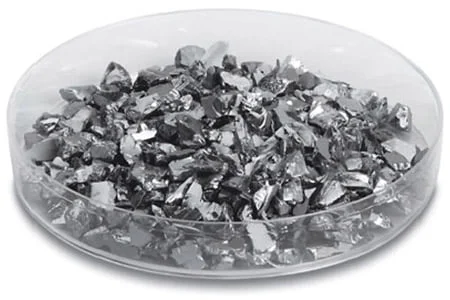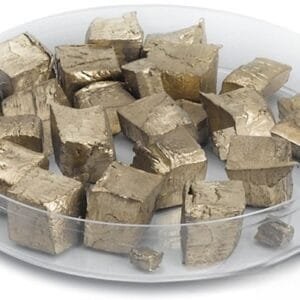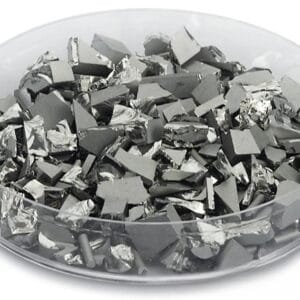Antimony Evaporation Materials Description
Antimony is a bluish-white, brittle metal with low thermal and electrical conductivity. At room temperature, it remains stable in air but converts to antimony trioxide (Sb₂O₃) when heated. When melted, antimony can be alloyed to strengthen and harden other metals. Antimony ingots are highly resistant to corrosion and oxidation, making them suitable for various chemical processes. They are cost-effective and commonly used in general applications.
High-purity antimony evaporation materials are crucial for achieving high-quality films in deposition processes. TFM specializes in producing antimony evaporation materials with purity levels of up to 99.999%, supported by rigorous quality assurance to ensure dependable performance.

Antimony (Sb) Evaporation Materials Specification
| Material Type | Antimony |
| Symbol | Sb |
| Color/Appearance | Silvery, Lustrous Gray, Semi-metallic |
| Melting Point | 630 °C |
| Sputter | RF, DC |
| Density | 6.68 g/cc |
| Thermal Conductivity | 24 W/m.K |
Antimony (Sb) Evaporation Materials Application
- Deposition Processes: Employed in semiconductor deposition, chemical vapor deposition (CVD), and physical vapor deposition (PVD).
- Optics: Utilized for wear protection, decorative coatings, and display technologies.
Antimony Evaporation Materials Packaging
| Material | Size | Quantity | Purity | Part Number |
| Antimony | 1mm - 3mm Pieces | 1 lb. | 99.999% | EVMSB501141 |
| Antimony | 1mm - 3mm Pieces | 25 g | 99.999% | EVMSB501141A |
| Antimony | 1mm - 3mm Pieces | 50 g | 99.999% | EVMSB501141B |
| Antimony | 1mm - 3mm Pieces | 100 g | 99.999% | EVMSB501141D |
| Antimony | 1mm - 3mm Pieces | 500 g | 99.999% | EVMSB501141T |
| Antimony | 3mm - 6mm Pieces | 25 g | 99.999% | EVMSB5036MMA |


 MSDS File
MSDS File



Reviews
There are no reviews yet.